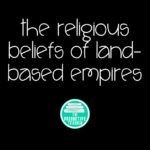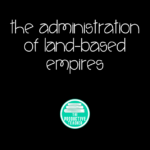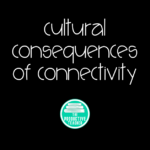Want to get back to the overview of the 1200 – 1450 CE section?
1200 – 1450 CE Overview
AP WORLD HISTORY HOMEPAGE
This post has everything you need to know about South and Southeast Asia’s Hindu, Buddhist, and Islamic kingdoms up to 1450 for the AP World History test. Check out the Google slides to learn more!
Hinduism and the Caste System
Hinduism, one of the world’s oldest religions, is closely associated with the caste system, a social hierarchy that has been a significant aspect of Indian society for centuries. The caste system divides people into distinct social groups, known as “castes” or “varnas,” with each caste traditionally having its own roles, responsibilities, and privileges. At the top of the hierarchy are the Brahmins (priests and scholars), followed by Kshatriyas (warriors and rulers), Vaishyas (merchants and farmers), and Shudras (laborers and service providers). Beyond these varnas, there is the category of Dalits, historically marginalized and subjected to discrimination. The caste system has deep historical and cultural roots, with some arguing that it originally served as a social division based on occupation and skills. However, over time, it became associated with notions of purity, hierarchy, and social status, sometimes leading to discrimination and inequality.
The Gupta Empire and Hinduism
The Gupta Empire, a defining period of India’s history, played a significant role in the revival and patronage of Hinduism. During the Gupta dynasty’s rule from the 4th to the 6th century CE, Hinduism experienced a resurgence, and the empire became a center of Hindu culture and religious expression. Gupta rulers were known for their strong support of Hinduism. Temples dedicated to various deities were constructed, and religious festivals were celebrated with great pomp and splendor. Hindu scholars and theologians made profound contributions to Sanskrit literature, composing epic poems and dramatic works that celebrated Hindu mythological themes. The Gupta period also saw the codification of Hindu law, exemplified by the “Laws of Manu.” This period of revival and flourishing of Hinduism left an indelible mark on Indian culture and society.
The Spread of Hinduism to Southeast Asia
Hinduism’s spread to Southeast Asia was a gradual process influenced by a combination of trade, cultural exchange, and political interactions. It flourished in the Khmer Empire in Cambodia between the 9th and 15th centuries and the Majapahit Empire in Indonesia between the 13th and 16th centuries.
Indian Maritime Trade: Ancient India engaged in extensive maritime trade with Southeast Asian regions, facilitating the exchange of goods, ideas, and cultural influences.
Cultural Diffusion: Along with trade, Indian culture, including Hinduism and Buddhism, began to spread through the region. Hinduism, with its rich mythology, rituals, and social structure, appealed to the ruling elites and intellectual classes in these areas.
Elite Patronage: Hinduism was often embraced by the ruling elites and monarchs in Southeast Asian kingdoms. These rulers saw the adoption of Hinduism as a means to legitimize their rule and solidify their connections with Indian traders and cultural centers.
Construction of Temples: The construction of Hindu temples played a crucial role in the spread of the religion. In Cambodia, the Angkor Wat temple complex, originally dedicated to the Hindu god Vishnu, stands as a monumental example of Hindu architecture and religious expression. Similarly, the Majapahit Empire in Java saw the construction of numerous Hindu temples.
Cultural Syncretism: In some instances, indigenous belief systems and animism in Southeast Asia merged with Hinduism to create syncretic faiths. This blending of beliefs gave rise to unique cultural expressions and religious practices.
Indian Influence on Art and Language: Indian art, iconography, and script significantly influenced the visual and written culture of Southeast Asia. Sanskrit inscriptions, for example, have been found on ancient artifacts, suggesting the importance of the language and its associated religious texts.
Islam in South and Southeast Asia
The spread of Islam in South and Southeast Asia was a gradual and complex process that took place over several centuries, primarily through trade, cultural exchange, and the influence of Muslim merchants, scholars, and rulers. Here’s an overview of how Islam spread in these regions:
Trade Routes: Trade played a significant role in the spread of Islam to South and Southeast Asia. Muslim traders from the Arabian Peninsula and Persian Gulf established extensive maritime and overland trade routes that connected the Middle East to South and Southeast Asian ports. Through these trade networks, merchants brought not only goods but also their religion and culture to the region.
Cultural Exchange: As Muslim traders settled in South and Southeast Asian coastal areas, they engaged in cultural exchange with local communities. This exchange included the sharing of languages, customs, and religious beliefs, contributing to the gradual Islamization of local populations.
Rulers and Elites: The conversion of rulers and elites to Islam often played a pivotal role in the spread of the religion. When a king or ruler adopted Islam, it could lead to the conversion of their subjects and the establishment of Islamic institutions. For example, in India, the Delhi Sultanate and later the Mughal Empire were instrumental in promoting Islam.
Sufi Missionaries: Sufism, a mystical and spiritual dimension of Islam, played a crucial role in the spread of the religion in South Asia. Sufi missionaries traveled throughout the region, spreading Islamic teachings and practices and often gaining followers through their emphasis on spirituality and devotion.
Islamic Empires: The establishment of Islamic empires in South Asia, such as the Delhi Sultanate and the Mughal Empire, further solidified the presence of Islam. These empires promoted Islam as the state religion and constructed mosques, madrasas (religious schools), and other Islamic institutions.
Syncretism and Accommodation: In many cases, the spread of Islam was marked by a process of syncretism, where Islamic beliefs and practices fused with local customs and traditions. This led to the development of distinct regional forms of Islam in South and Southeast Asia.
Conversion and Local Communities: Islam spread not only among the ruling classes but also among local communities, particularly in coastal regions and trading centers. Over time, local populations in various parts of South and Southeast Asia embraced Islam, often while retaining elements of their pre-Islamic cultural heritage.
Buddhism in South and Southeast Asia
Buddhism was founded around 500 BCE in Nepal when a prince named Siddhartha Gautama found enlightenment and began to teach others. It spread into Southeast Asia in the 1st, 2nd, and 3rd centuries CE. Like Islam, Buddhism spread via trade routes, both the Silk Roads and maritime trade.
Buddhism appealed to the lower caste Hindu populations because, in Buddhism, all people are equal. The concepts of dharma, karma, and reincarnation were similar to Hinduism, making the new religion easy for new converts to understand.
Evidence of Buddhism in South and Southeast Asia is easy to spot in Buddhist monasteries and writings. Buddhist monasteries show that the kings and other leaders of the area embraced the religion as they often funded the buildings and monks who lived there. The largest evidence of the marriage between Hinduism and Buddhism in Southeast Asia is the Angor Wat temple complex in modern-day Cambodia. This massive site is four times larger than Vatican City and carries both Hindu and Buddhist symbolism.
Angkor Wat
A Khmer king built Angkor Wat in the 12th century as a Hindu temple for the god Vishnu. Later, Buddhist symbology was added. Today, wall carvings show stories from both Hindu and Buddhist mythology. The massive temple complex is over 402 acres, surrounded by a moat. Angkor Wat is an important example of how Hinduism and Buddhism were both accepted by the rulers and people of Southeast Asia.
The Srivijaya Empire
The Srivijaya Empire was a maritime powerhouse from the 7th to the 14th centuries CE. The empire originated on the island of Sumatra. At its largest point, it extended from the Malay Peninsula to the island of Java.
Because the empire occupied the Strait of Malacca that connected the Indian Ocean and the South China Sea, they controlled all sea trade routes between India and China. The people of the empire became rich trading spices, gold, and wood.
The Srivijaya Empire was a Buddhist empire. The rulers built many temples and monasteries, including Borobudur. Like other empires of the area, they also practiced Hinduism.
The main rivals of the Srivijaya Empire were the Chola Dynasty from Southern India and the Khmer Empire of Cambodia. In the 14th century, the Srivijaya Empire was destroyed by the Majapahit Empire, which originated on the island of Java.
Borobudur
Borobudur is the largest Buddhist temple in the world. It was built between the 9th and 10th centuries by the Srivijaya Empire. The temple is full of symbology from Buddhist mythology. The entire temple symbolizes the path from the world of desire at the temple’s base to enlightenment at the top of the temple.
After the fall of the Srivijaya Empire, the temple was forgotten and covered by the jungle and volcanic ash. It was rediscovered in 1814 by Sir Thomas Stamford Raffles, a British occupier of Java.
The Bhakti Movement
Around the 7th century CE, some Hindus began exploring deep, personal devotional relationships with specific religious deities. Deities from other religions could also be a part of the Bhakti Movement. Bhakti means loving devotion. Some historians believe the Bhakti movement was inspired by the Islamic devotion and relationship with God.
This movement viewed the relationship with a deity as larger than the traditional rituals and priestly authority. It also transcended the caste system as it taught that all people are equal in the eyes of god. With this foundation, followers of the Bhakti Movement questioned societal norms such as caste and gender inequality.
Sant (Saint) Poets were central to the Bhakti Movement. They wrote beautiful poems about personal relationships with the gods and goddesses they worshipped. Prayer, songs, pilgrimages, and sacrifices were also a part of honoring specific deities.
The Bhakti Movement ended around the 17th century, but small sects have continued practicing it.
The Vijayanagara Empire
The Vijayanagara Empire was founded in 1336 by Harihara and Bukka, two brothers. The brothers had been working in another Hindu kingdom in India when the Delhi Sultanate took it over. The brothers were captured and forced to serve in the Delhi Sultanate army. They converted to Islam while there.
Once they were released, they returned home to the Deccan Plateau region of southern India. There, they renounced Islam and returned to their Hindu beliefs. They rallied the neighboring nobles to fight against the Muslim invaders.
At this time, Southern India had a feudal system similar to medieval Europe. There were many Hindu kingdoms. The Vijayanagara Empire successfully consolidated power by using government officials to collect taxes and manage local administration tasks.
The leaders of the empire were patrons of the arts. Literature, art, and architecture flourished during the golden age of the empire (1509 – 1529). The Vittala Temple, built to honor a form of Lord Vishnu, was built during this time.
For hundreds of years, the Vijayanagara Empire had a strong military that fended off attacks by other Hindu kingdoms and the Islamic sultanates, including the Delhi and Bahmani Sultanates. Unfortunately, in 1565, the empire was attacked by multiple Islamic sultanates. The capital city was destroyed, and the empire was over.
The Rajput Kingdoms
After the fall of the Gupta Empire in 550 CE, smaller Hindu kingdoms arose throughout northern India. These were called Rajput Kingdoms because raj means king and put means son. These kingdoms were run by the sons of kings. The rulers of the Rajput Kingdoms claimed to trace their ancestry back to ancient dynasties.
The Rajput Kingdoms were very similar to the kingdoms in feudal Europe. They valued military courage and had a strong code of ethics. A king would control a large amount of land. They would parcel out the land to nobles who would act as warriors for the king and manage the land.
There were several dynasties within the Rajput Kingdoms. Individual kingdoms would rise and fall throughout the years. The kingdoms were constantly fighting off advances by the Delhi Sultanate and, later, the Mughal Empire, both Islamic powerhouses in India. The kingdoms constructed forts to defend their land as well as palaces and temples.
By the 12th century, many of the Rajput Kingdoms had been brought under the control of the Mughal Empire. Some kingdoms even persisted until India’s independence in 1947.
The Majapahit Empire
The Majapahit Empire was founded on the Island of Java in 1293. Like the Srivijaya Empire, the Majapahit Empire was a maritime empire with a strong navy to protect trade routes and ports.
Over time, the Majapahit Empire took over land from the Srivijaya Empire. At its greatest extent, the empire occupied modern Indonesia and parts of Malaysia, Singapore, East Timor, and the Philipines. Because the empire occupied the Strait of Malacca that connected the Indian Ocean and the South China Sea, they controlled all sea trade routes between India and China. The people of the empire became rich trading spices, gold, and wood.
The Majapahit Empire lost power as Islamic influence in Southeast Asia expanded. In 1478, the Demak Sultanate took over the capital city. While parts of the empire continued, it would never reach its previous dominance in the area.
The Sukhothai Kingdom
The Sukhothai Kingdom was the first modern Thai kingdom. It was located in modern Thailand and stretched down into the Malay Peninsula.
The kingdom was formed in 1238 when two Thai chieftains declared independence from the declining Khmer Empire. The kingdom’s leaders added territory through military advances and diplomacy by making alliances with neighboring kingdoms.
Much of modern Thai art and architecture is influenced by the Sukhothai Kingdom. The Thai alphabet was developed at this time as well. The official religion of the kingdom was Theravada Buddhism.
In the 14th century, the Sukhothai Kingdom started losing territory and was gradually overtaken by the Ayutthaya Kingdom. By 1438, Sukhothai was only a province of the Ayutthaya Kingdom.
The Sinhala Dynasties
People have lived on the Island of Sri Lanka for nearly 40,000 years! The first kingdom on Sri Lanka was the Anuradhapura Kingdom. It began in 377 BCE.
There were many other kingdoms on Sri Lanka over the next 2,000 years. Sometimes, the entire island was united under one kingdom, such as the Chola Kingdom, from 993 to 1077 CE. Most of the time, the island was split into several kingdoms. The Kingdom of Jaffna, in northern Sri Lanka, wasn’t even ruled by the Sinhala Dynasties. Tamil Dynasties ruled it. Sinhala means people originally from Northern India. Tamil means people originally from Southern India.
The relationship between India and Sri Lanka brought Buddhism to the island. A Buddhist nun even brought a sapling from the original tree where the Buddha found enlightenment and planted it in Sri Lanka.
In 1505, the Portuguese arrived in Sri Lanka and took over many of the kingdoms. The Dutch followed them, and then the British came. One kingdom, the Kandyan Kingdom in the central highlands, was able to resist foreign occupation for hundreds of years. Unfortunately, they, too, fell to the British in 1815.
The Khmer Empire
Jayavarman II founded the Khmer Empire in the 9th century CE in modern Cambodia. Before Jayavarman II, the area had been controlled by other powers, such as the Srivijaya Empire.
The Khmer Empire was an advanced civilization. Its capital city, Angkor, was the largest pre-industrial city in the world. Water management was a huge part of keeping the city functioning and supporting agriculture. They had reservoirs, canals, and baray (artificial lakes) to keep water available where it was needed.
They also built Angkor Wat, a massive temple. Angkor Wat was initially built for the Hindu god, Vishnu, but was later repurposed as a Buddhist temple. Angkor Wat is a good example of how the people of the Khmer Empire embraced Hinduism and Buddhism.
By the 15th century, the empire fell due to invasions from surrounding powers, environmental changes, and a shift in trade routes that isolated the empire.
Want to get back to the overview of the 1200 – 1450 CE section?








Leave a Reply